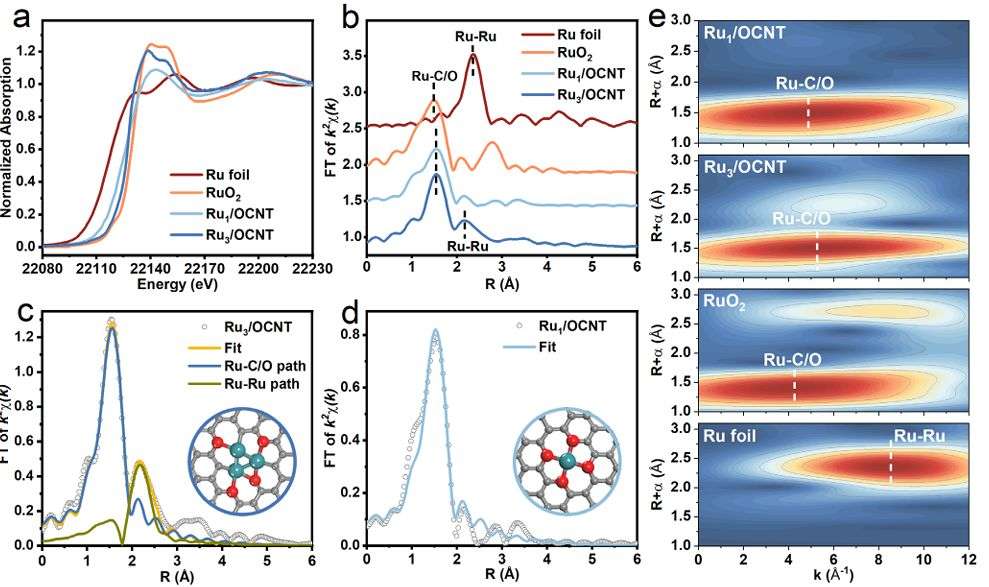
Atomically precisely loaded nanocluster catalysts (APSNCs) with well-defined metal active sites, unique geometrical and electronic structures, and metal-metal bonds exhibit excellent catalytic performance. However, the preparation of APSNCs with well-defined active centers and stable structures remains a great challenge due to the difficulty in controlling aggregation phenomena during synthesis and catalytic reactions.2025 On March 27, 2025, Shubo Tian of Beijing University of Chemical Technology, Yun Zi of the University of Auckland, New Zealand, and Yi Yao of the National Synchrotron Radiation Laboratory of the University of Science and Technology of China published a paper in the internationally renowned journal Advanced Functional Materials with a research paper titled “Enhanced Tri-Atom Ru-Based Catalyst for Hydrogen Evolution Reaction via Rapid Pyrolysis of Precursor”, Xiaoyang Xiaoyang Ren, Mengjiao Li and Kaiyue Wang are the co-first authors of the paper, and Shubo Tian, Ziyun Wang and Yi Yao are the co-corresponding authors.

Shubo Tian, Trainee Professor, Bo-director, Young Changjiang Scholar, graduated from Hebei Normal University with B.S. degree in 2013, graduated from University of Chinese Academy of Sciences with M.S. degree in 2016, received his Ph.D. degree from Tsinghua University in 2019, and carried out post-doctoral work at National University of Singapore from 2019 to 2020, and then joined Beijing University of Chemical Technology (BUCS).
He is mainly engaged in the research of controllable synthesis of atomic-scale functional materials and in catalytic and specialty properties, and has achieved a series of results. In total, he has published more than 40 academic papers with more than 4000 citations. Among them, he has published more than 30 papers in international journals including Nat. Catal., Nat.Commun.,Chem, J.Am.Chem.Soc., Angew. Chem.

Wang Ziyun is a Lecturer at the University of Auckland, New Zealand (equivalent to an Assistant Professor in the U.S.) He received his undergraduate degree from East China University of Science and Technology (ECUST) in 2012, and his PhD degree from Queen's University (QUT) in 2015, where he studied under Prof. Peijun Hu and Prof. Chris Hardacre. He conducted postdoctoral research at Stanford University (under the supervision of Prof. Jens K. Nørskov) and the University of Toronto (under the supervision of Prof. Edward H. Sargent).
His main research interests include theoretical calculations of carbon dioxide electroreduction, artificial intelligence-assisted multiphase catalytic design, and surface microdynamics. He has published 35 articles as corresponding author or (co)first author, including Nature, Nature Catalysis, Nature Energy, Nature Communications, J. Am. Chem. Soc., Angew. Chem. and Chem, and other internationally recognized journals.
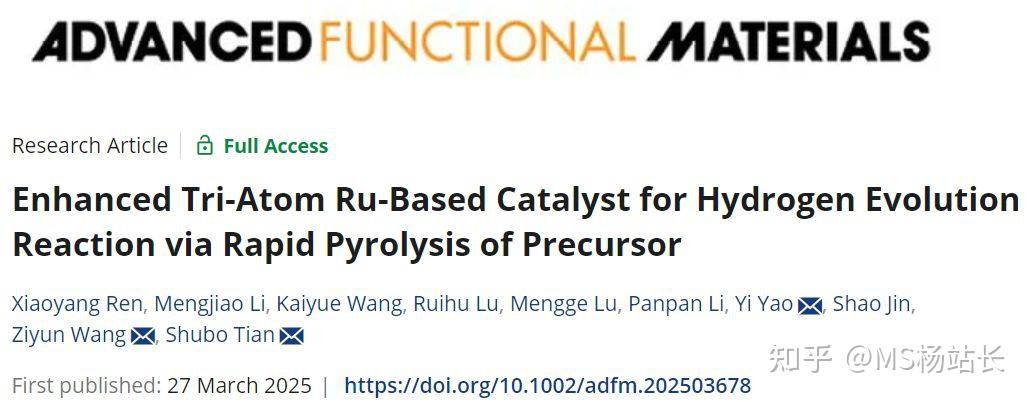
In this thesis, Ru3 nanocluster catalysts (Ru3/OCNT) uniformly dispersed on oxidized carbon nanotubes were successfully synthesized by a fast pyrolysis precursor strategy. The obtained Ru3/OCNT exhibited excellent catalytic performance for the basic hydrogenolysis reaction (HER). The catalyst showed an overpotential of only 19 mV at a current density of 10 mAcm-2 in 1 MKOH solution, which was superior to commercial 20 wt.% Pt/C and 5 wt.% Ru/C catalysts. In addition, the mass activities of Ru3/OCNT were 23.47 and 11.83 times higher than those of commercial Pt/C and Ru/C, respectively. Density-functional theory (DFT) calculations showed that the metal-metal interactions and metal-carrier interactions in Ru3/OCNT effectively modulated the electronic structure of Ru atoms, reduced the hydrogen adsorption energy at the catalytic site, and promoted the desorption of H*. This work provides a new approach for the design and synthesis of APSNCs with excellent alkaline hydrogen precipitation properties.

Figure 1: Schematic synthesis and morphological characterization of Ru3/OCNT catalysts
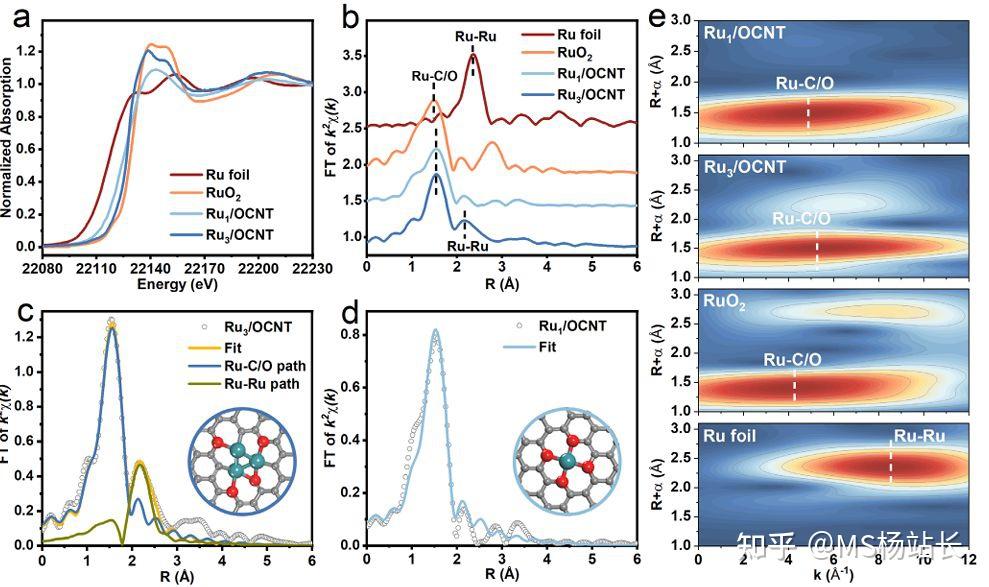
Figure 2: X-ray absorption spectroscopy (XAS) analysis of Ru-based catalysts
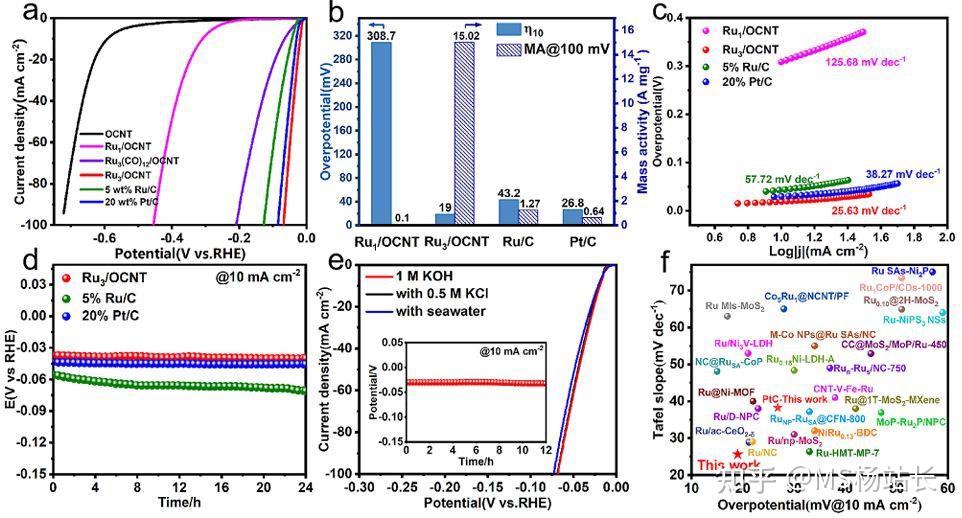
Figure 3: Electrochemical performance test of Ru3/OCNT catalysts
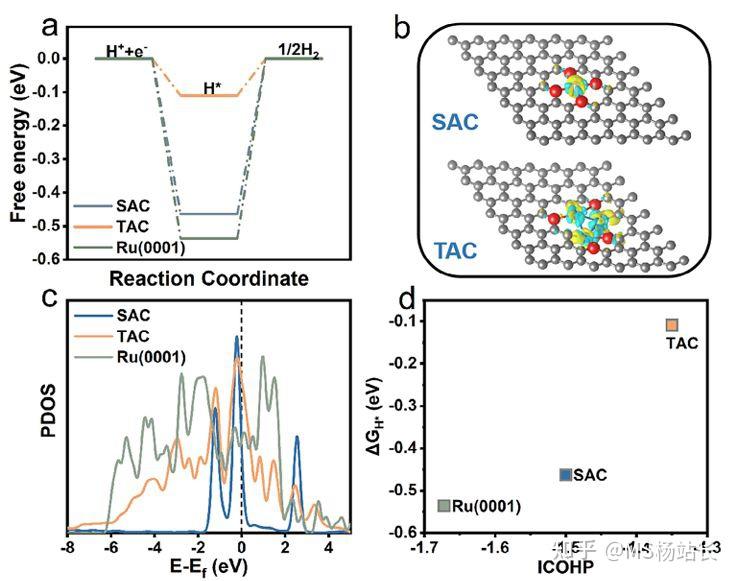
Figure 4: Results of theoretical calculations In this study, triatomic ruthenium-based catalysts (Ru3/OCNT) uniformly dispersed on oxidized carbon nanotubes were successfully synthesized through a fast pyrolysis precursor strategy and applied to hydrogen precipitation reaction (HER) under alkaline conditions. It not only provides a new idea for the design and synthesis of atomically precisely loaded nanocluster catalysts (APSNCs) with excellent alkaline hydrogen precipitation performance, but also reveals the important roles of strong metal-carrier interactions (SMSI) and metal-metal interactions in the optimization of the catalyst performance through experiments and theoretical calculations. This Ru3/OCNT-based catalyst shows excellent stability and efficient HER performance under alkaline conditions, which not only performs well in simulated seawater and real seawater electrolysis, but also provides a new direction for the development of high-performance and low-cost hydrogen precipitation catalysts.
Enhanced Tri-Atom Ru-Based Catalyst for Hydrogen Evolution Reaction via Rapid Pyrolysis of Precursor, Adv. Funct. Mater.https://doi.org/10.1002/adfm.202503678
